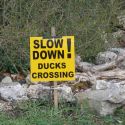To the Saatchi Gallery, one of our regular stopping spots. The best exhibit this year is a series of arctic photographs by two winners of the 9th Carmignac Photojournalism award. There are works depicting Alaska and Resolute Bay, as well as Greenland and Norway, but the most compelling are of Russia. The message is clear for all countries. Both the fragile (if harsh) environment and the Indigenous people who populate it are at risk as the land and its natural resources are exploited regardless of the risks of pollution and global warming.
In Russia there are pictures not only of ice breakers and oil rigs but of the Native families, their lives a fascinating combination of the timeless traditional and the most modern technological. Summed up strikingly by a photograph of the camp of a nomadic herding family taken from the window “eye” of the government helicopter that takes the children to boarding school. A companion photo, also by Yuri Kozyrev, shows a family gathering the children’s belongings as they await the helicopter’s arrival.
And then there are the mammoth tusk hunters, delighted with their find but probably more exploited than exploiters, also captured by Kozyrin. They’ve been tunnelling underground, using water pumps, adapted from firefighting gear and snowmobile engines and are delighted with their find, as the price for a kilo of tusk ivory was $60 and one tusk would cover their expenses. But the story is more
complicated, as an accompanying poster explains.
So the future of the young men and their community? Who knows? And finally there is a haunting photograph by Kadir van Lohuizen of the jawbones of whales marking a cemetery boundary in Alaska.
complicated, as an accompanying poster explains.
So the future of the young men and their community? Who knows? And finally there is a haunting photograph by Kadir van Lohuizen of the jawbones of whales marking a cemetery boundary in Alaska.





